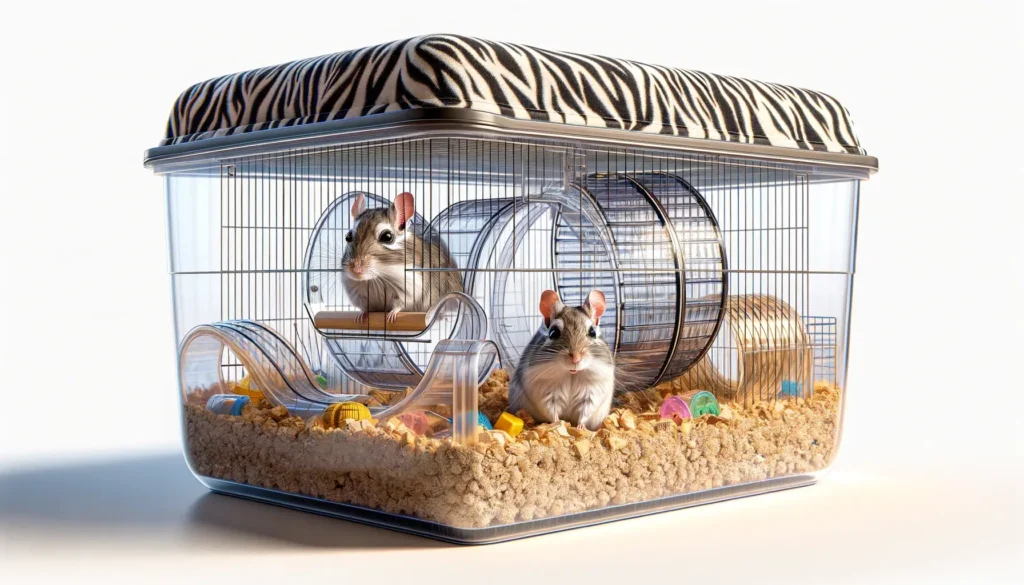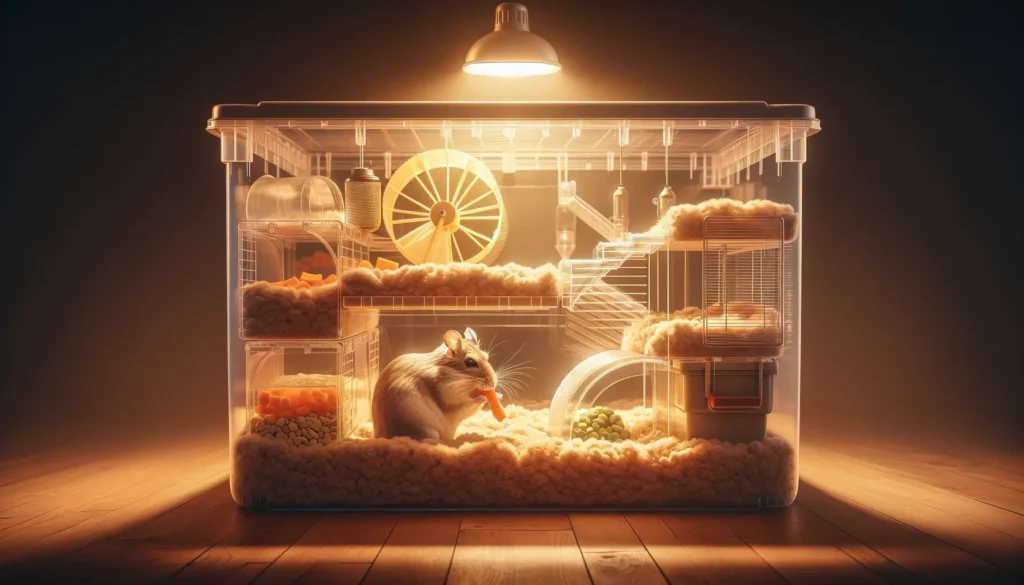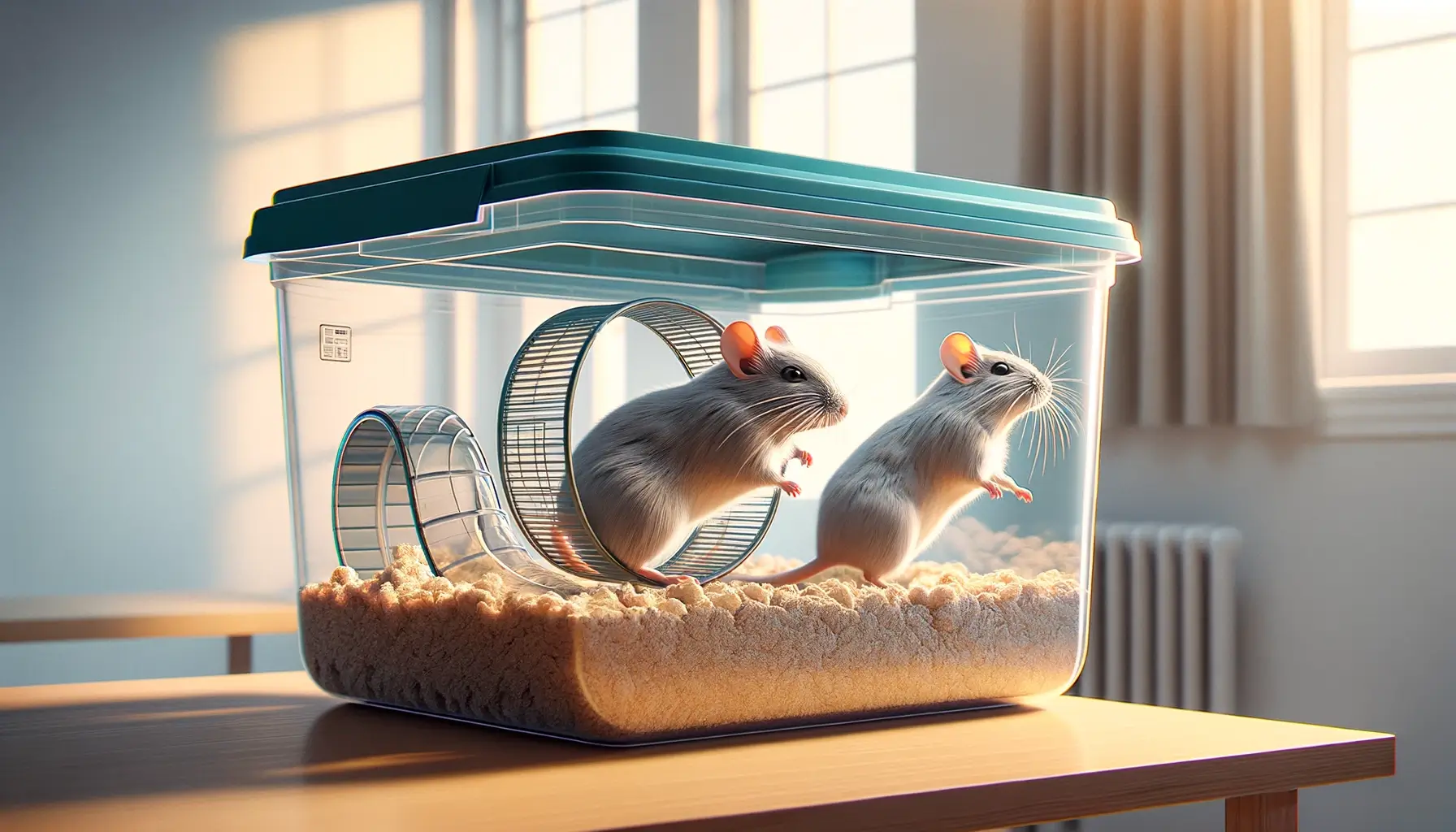Gerbils are delightful pets known for their playful nature and minimal care requirements. When it comes to housing these furry friends, the goal is to create a comfortable, stimulating, and safe environment that mimics their natural habitat as closely as possible.
Among the various housing options available, bin cages have emerged as a popular choice for many gerbil owners.
But can gerbils truly live in bin cages? In this article we will discuss is bin cage really a good home for gerbil and we will also discuss advantages and addressing common concerns.
Understanding Bin Cages
A bin cage is essentially a modified storage bin transformed into a pet habitat. Typically made from clear plastic, these cages are customized with added ventilation and access points to suit the needs of small animals.
Unlike traditional wire cages or glass tanks, bin cages offer a unique blend of security, space, and customization options. They have gained popularity not just among gerbil owners but also within the hamster and mouse pet communities.
The basic structure of a bin cage involves cutting out portions of the bin’s lid or sides and replacing them with wire mesh or grating for adequate airflow.
Additional modifications might include the installation of shelves, wheels, and tunnels to enrich the pet’s living environment. The appeal of bin cages lies in their simplicity and the ease with which they can be tailored to meet the specific needs of different pets.
Advantages of Bin Cages

Cost-effectiveness and Availability: One of the most compelling reasons to consider a bin cage is its affordability. Storage bins are readily available at most home improvement or department stores at a fraction of the cost of traditional pet cages. This makes bin cages an attractive option for pet owners on a budget or those looking to house multiple gerbils without breaking the bank.
Customization and Adaptability: Bin cages can be easily customized to accommodate the unique needs of gerbils. Whether it’s adding extra levels for exploration, creating burrowing areas with deeper bedding, or installing custom play structures, bin cages offer unparalleled flexibility.
This adaptability ensures that gerbils can enjoy a varied and stimulating environment, crucial for their physical and mental well-being.
Ease of Cleaning and Maintenance: Plastic bins are incredibly easy to clean and maintain. Their smooth surfaces can be quickly wiped down, and the absence of complex structures makes it easy to remove and replace bedding.
For gerbil owners, this ease of maintenance is a significant advantage, ensuring that their pets’ habitat remains clean and hygienic with minimal effort.
Also read: How Big Do Gerbil Cages Need to Be?
Concerns and Considerations for Bin Cages
While bin cages offer numerous advantages for gerbil housing, there are important considerations to keep in mind to ensure these enclosures are safe and suitable for your furry friends. Addressing these concerns is crucial for creating a secure and stimulating environment for gerbils.
Chewing Risks
Gerbils are natural chewers, a behavior essential for keeping their continuously growing teeth at a manageable length. However, this instinct poses a significant challenge when it comes to plastic bin cages.
The risk of gerbils chewing through the plastic cannot be overlooked. Not only is there a chance of escape, but your gerbil’s health could be negatively impacted by consuming plastic.
To mitigate this, choose bins made of thicker, more durable plastic and regularly inspect the cage for signs of chewing. Providing ample chew toys and materials can also redirect this natural behavior away from the cage itself.
Ventilation and Security
Adequate ventilation is paramount in any gerbil habitat to ensure a fresh air supply and prevent the buildup of harmful ammonia from urine. When crafting a bin cage, ensure the wire mesh sections are large enough to promote good air circulation.
Security is another vital aspect, as gerbils are adept at finding escape routes. Ensure all modifications, like mesh coverings and access points, are securely attached and regularly inspected for potential weaknesses.
Size and Space Requirements
Gerbils are active creatures that require space to explore, burrow, and engage in natural behaviors. A common concern with bin cages is whether they provide sufficient space for such activities.
The minimum recommended size for a gerbil cage is 10 gallons, but larger is always better, especially for multiple gerbils. Ensure the bin cage offers ample room for deep bedding, exercise equipment, and enrichment toys to simulate a natural and engaging environment.
Creating a Suitable Bin Cage for Gerbils

Designing and setting up a bin cage that meets all your gerbils’ needs can be a rewarding DIY project. Here’s a step-by-step guide to ensure you create a safe and stimulating home for your pets:
- Select the Right Bin: Choose a clear, large storage bin, preferably with smooth sides and made from durable plastic. The size of the bin should accommodate the number of gerbils and provide ample space for bedding and enrichment.
- Ventilation: Cut out sections of the lid or sides and replace them with wire mesh for ventilation. Ensure the mesh is securely attached to prevent escapes.
- Add Bedding: Fill the bottom of the bin with a deep layer of suitable bedding to allow for natural burrowing behavior. Aspen shavings or paper-based bedding are good choices.
- Enrichment: Install shelves, tunnels, and toys to create an engaging environment. Ensure all materials used are safe and non-toxic for gerbils.
- Secure and Inspect: Regularly inspect the cage for any signs of wear, chewing, or potential escape routes. Maintenance is key to keeping your gerbil safe and secure in their bin cage.
FAQs
Can gerbils chew through bin cages?
Yes, gerbils have strong teeth and can chew through plastic bin cages. To minimize this risk, select bins made of thicker, more durable plastic and provide plenty of appropriate chew toys to satisfy their gnawing instincts, diverting attention away from the cage itself.
How often should I clean my gerbil’s bin cage?
Gerbil bin cages should be spot cleaned daily to remove soiled bedding and uneaten food. A thorough cleaning, including replacing all bedding and sanitizing the bin, is recommended every week to ensure a healthy and odor-free environment for your gerbils.
What size bin is recommended for two gerbils?
For two gerbils, a bin of at least 20 gallons is recommended. This size provides sufficient space for them to burrow, explore, and exercise comfortably. Larger bins offer even more space for enrichment, which is beneficial for their physical and mental well-being.
Can I house multiple gerbils in a bin cage?
Yes, multiple gerbils can live together in a bin cage, provided it’s spacious enough to accommodate them comfortably. Ensure there’s ample room for deep bedding, exercise, and separate areas for eating and sleeping to prevent territorial disputes and promote harmonious living.
Conclusion
Choosing the right home for your gerbils is crucial for their health and happiness. Bin cages, with their affordability and customization potential, offer a viable option for gerbil housing. However, it’s essential to address concerns like chewing, ventilation, and space to create a safe and enriching environment.
By carefully considering these factors and regularly maintaining the cage, you can ensure your gerbils thrive in their bin cage home, enjoying a fulfilling and joyful life under your care.











